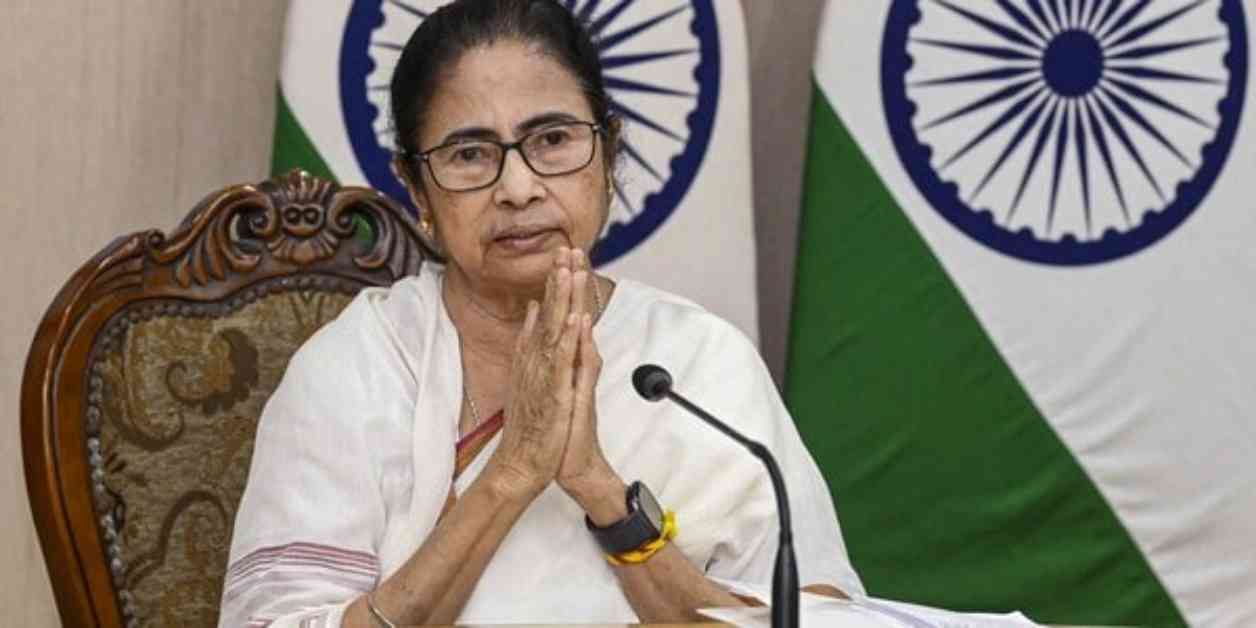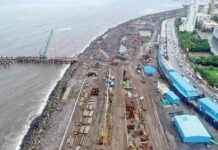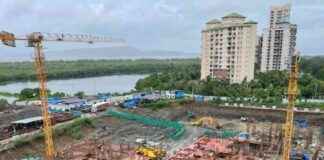**Guv Bose Seeks Explanation from Mamata Banerjee on Bengal-Jharkhand Border Closure**
West Bengal Governor CV Ananda Bose has raised concerns and sought clarification from Chief Minister Mamata Banerjee regarding the closure of the Bengal-Jharkhand border for three days. The decision to seal the interstate border was made in response to rising water levels that had inundated National Highway 16 in Panshkura.
Governor Bose, invoking Article 167 of the Constitution, has requested Chief Minister Banerjee to provide details on the accuracy of these reports and the rationale behind this move. The closure affects the three districts of Paschim Medinipur, Purulia, and Paschim Bardhaman, where the border between West Bengal and Jharkhand lies.
On the ground, the closure has led to long queues of cargo trucks carrying essential goods at the Jharkhand-West Bengal border. These trucks, laden with raw materials and other important supplies, have been stranded due to the border shutdown, causing disruptions to trade and commerce in the region.
In response to the flooding that prompted the border closure, Chief Minister Mamata Banerjee has written to Prime Minister Narendra Modi, highlighting the impact of the release of 5 lakh cusecs of water from DVC-controlled dams. She referred to the floods as a “man-made disaster” that has severely affected over 5 million people in Bengal.
Expressing her frustration with the negligence of the central government, Banerjee warned that if such failures persist, the state may consider severing ties with the Damodar Valley Corporation (DVC). She criticized the authorities for ignoring technical, mechanical, and managerial issues within the DVC, which have exacerbated the flooding crisis in the region.
In her letter to Prime Minister Modi, Banerjee emphasized the devastating consequences of the excessive water release from the Maithon and Panchet dams, which are managed by the DVC. The unprecedented discharge of water has caused widespread floods across South Bengal, covering over 1,000 square kilometers and impacting nearly 5 million residents.
The Chief Minister underscored the magnitude of the flood, labeling it as the most severe event in the lower Damodar region since 2009. She stressed the urgent need for accountability and corrective measures to prevent similar disasters in the future, urging the central government to address the systemic issues within the DVC.
As the situation unfolds, Governor Bose’s inquiry into the border closure and Chief Minister Banerjee’s correspondence with the Prime Minister shed light on the challenges facing West Bengal in the wake of the flooding crisis. The need for coordinated efforts and effective governance to mitigate the impact of natural disasters and prevent man-made calamities remains a pressing priority for the state and its leadership.
**Impacts on Trade and Commerce**
The closure of the Bengal-Jharkhand border has had significant repercussions on trade and commerce in the region, with cargo trucks carrying essential goods stranded at the interstate boundary. The disruption in transportation and logistics has hampered the flow of goods and supplies, leading to potential shortages and delays in delivery.
Businesses and industries that rely on the seamless movement of goods between West Bengal and Jharkhand are facing challenges due to the border closure. The economic implications of this disruption could have far-reaching effects on local markets, supply chains, and consumer access to essential products.
Efforts to address the logistical challenges posed by the border closure are essential to prevent further disruptions to trade and commerce. Coordination between state authorities, transport agencies, and industry stakeholders is crucial to facilitate the smooth transit of goods and mitigate the impact of the closure on businesses and consumers.
**Environmental Concerns and Infrastructure Management**
The flooding triggered by the release of water from DVC-controlled dams has highlighted the environmental vulnerabilities and infrastructure deficiencies in the region. The inundation of vast areas in South Bengal underscores the need for sustainable water management practices and robust infrastructure to mitigate the impact of natural disasters.
The failure of the DVC to address technical, mechanical, and managerial issues within its operations has exacerbated the flooding crisis, causing widespread devastation and displacing millions of residents. The urgent need for comprehensive flood control measures and infrastructure upgrades to prevent similar disasters in the future is paramount.
Chief Minister Banerjee’s call for accountability and action to address the systemic failures within the DVC reflects the state’s determination to prioritize environmental conservation and disaster preparedness. Collaborative efforts between the state government, central authorities, and regulatory bodies are essential to ensure the effective management of water resources and infrastructure to safeguard communities from future calamities.




















